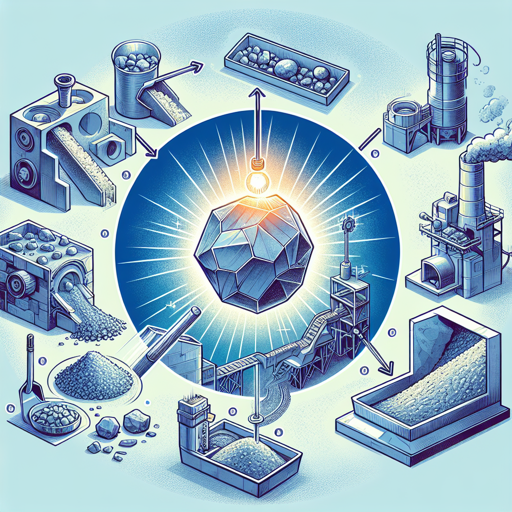Unveiling the Cement Making Process
Delve into the intricate steps taken to transform raw materials into the vital construction component - cement.

Introduction
Cement, one of the most extensively used building materials globally, is the backbone of construction industries. However, few are aware of the involved, fascinating geological process that transforms raw materials into this essential product. This article unveils the intricacies of cement production, providing insights into its various stages right from extraction to the final product.
Raw Material Extraction
The initial step in the cement production process is the extraction of raw materials, typically limestone (calcium), sand or clay (silicon), bauxite (aluminum), and iron ore. These materials are extracted from the earth through mining and quarrying. These raw materials are rich in the essential elements required to produce cement.
Raw Material Preparation
Once extracted, the raw materials go through a crushing phase, which takes place in crushers and reduces the size of the materials. This is followed by the blending or mixing phase where the crushed materials are mixed in the correct proportions. The result is a fine raw mix that is ready for the next stage.
Clinker Production
In the clinker production phase, the raw mix is transferred to a rotary kiln. Here, the mixture is heated to approximately 1450 degrees Celsius, triggering a series of chemical reactions that convert the raw mix into ‘clinker’. It is the clinker that gives cement its binding properties.
Cement Grinding
The final stage involves grinding the clinker into a fine powder, adding a small amount of gypsum to regulate the cement’s setting time. The outcome is the final product, cement, ready for use in construction.
“Cement is not just a matter of mixing. It’s about transforming raw materials into a binding agent that will stand the test of time.” - Unknown
| Stage | Description |
|---|---|
| Raw Material Extraction | Mining and quarrying raw materials rich in essential elements |
| Raw Material Preparation | Crushing and blending the raw materials in the right proportions |
| Clinker Production | Heating the raw mix to form ‘clinker’ |
| Cement Grinding | Grinding the clinker into a fine powder and adding gypsum |
For a more detailed exploration into the chemistry of cement production, you can visit this resource.
Conclusion
Cement is more than just a common material used in building structures. It’s a testament to human ingenuity, showcasing how we’ve decoded nature’s secrets and harnessed raw materials, transforming them into a substance with remarkable binding properties. Understanding the cement production process provides not only a glimpse into an essential industrial process but also into the fascinating world of geology and earth sciences.